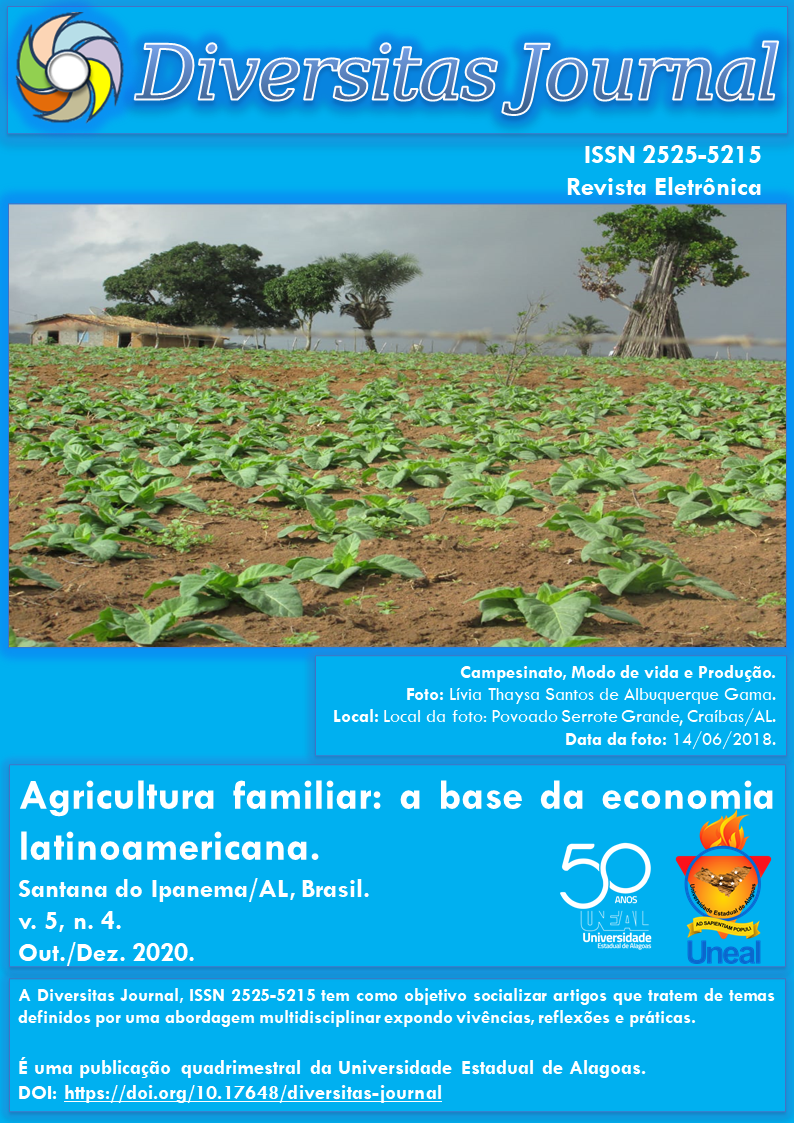Prevalência de Disfunções Temporomandibulares em Indivíduos que Procuraram Tratamento Odontológico Protético
DOI:
https://doi.org/10.17648/diversitas-journal-v5i4-1303Abstract
ABSTRACT: Temporomandibular disorder (TMD) refers to a set of signs and symptoms that affect the muscles of the orofacial region, temporomandibular joint (TMJ) and attached structures. This study aimed to analyze the prevalence of TMD in patients who had an indication for prosthetic dental treatment. This is an observational, analytical, transversal, quantitative study, approved by the ethics committee under opinion number: 2006/0107. All patients who sought dental treatment for prosthetic purposes were included, excluding patients under the age of 18 years and who were undergoing orthodontic treatment. The Diagnostic Criteria in Research on Temporomandibular Disorders (RDC/TMD) was applied to analyze the prevalence of TMDs in the studied population. The data were tabulated in Microsoft Office Excel and then analyzed by descriptive statistics using absolute and relative frequency calculations. Eighty individuals were studied, of which 70% were female and 30% were male, with a prevalence of age between 45 and 55 years (fi = 27). 25% of the sample had a diagnosis of TMD (P=0,3837), of these, 15% were female. Of the disorders identified, separated by 03 groups, the most frequent was disc displacement with reduction (GII) = 58.33%, arthralgia / osteoarthritis (GIII) = 25.00 % and, myofascial pain (GI) = 16.67%. A considerable percentage (25%) of the studied group presented TMD, therefore, it is suggested that the absence of teeth may cause disharmony in the stomatognathic system, affecting the TMJ, depending on the individual's physiological and structural tolerance. Further studies of this nature are suggested to characterize the pathology in this audience and implement appropriate treatments.
KEYWORDS: Temporomandibular joint, stomatognathic system, clinical study.
Metrics
Downloads
Published
How to Cite
Issue
Section
License
Copyright (c) 2020 Jadson Mathyas Domingos da Silva, Mariana Josué Raposo

This work is licensed under a Creative Commons Attribution 4.0 International License.
The Diversitas Journal expresses that the articles are the sole responsibility of the Authors, who are familiar with Brazilian and international legislation.
Articles are peer-reviewed and care should be taken to warn of the possible incidence of plagiarism. However, plagiarism is an indisputable action by the authors.
The violation of copyright is a crime, provided for in article 184 of the Brazilian Penal Code: “Art. 184 Violating copyright and related rights: Penalty - detention, from 3 (three) months to 1 (one) year, or fine. § 1 If the violation consists of total or partial reproduction, for the purpose of direct or indirect profit, by any means or process, of intellectual work, interpretation, performance or phonogram, without the express authorization of the author, the performer, the producer , as the case may be, or whoever represents them: Penalty - imprisonment, from 2 (two) to 4 (four) years, and a fine. ”


















